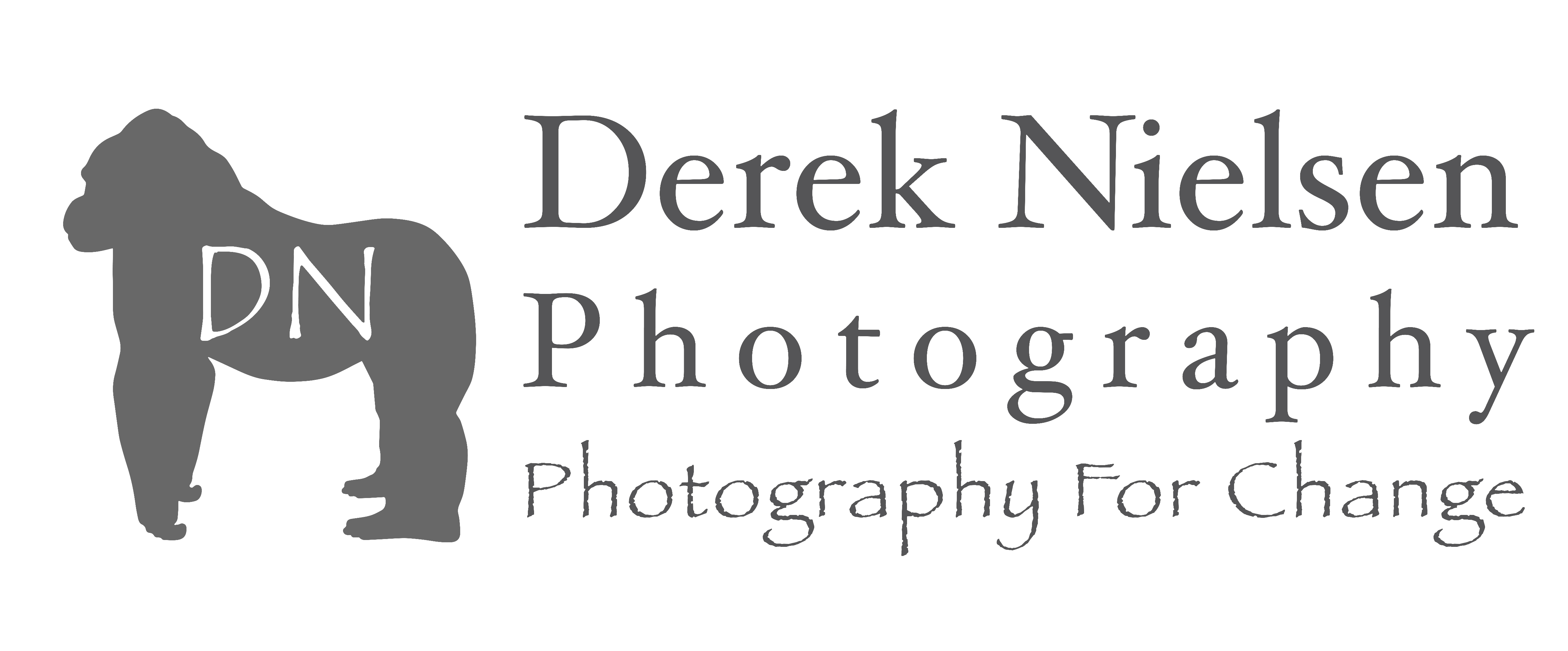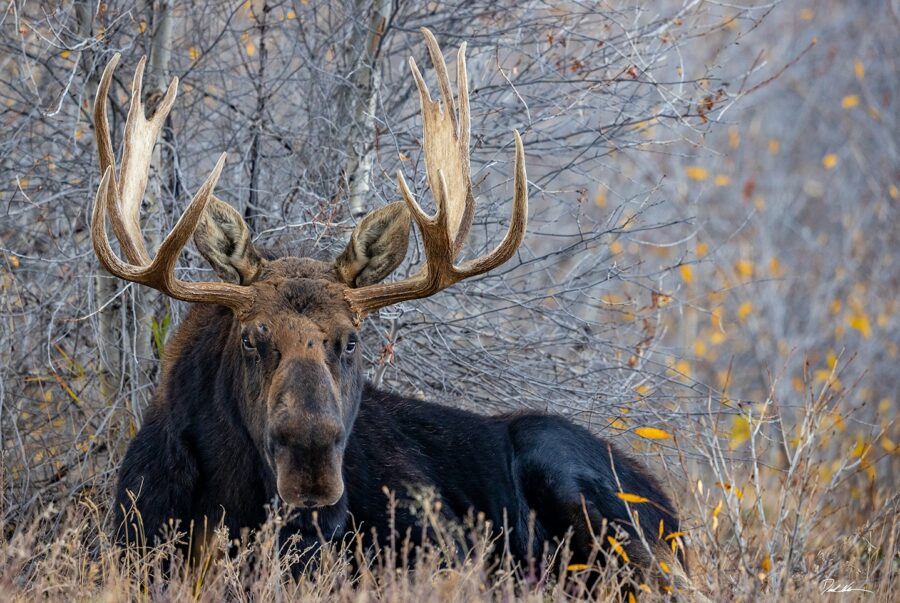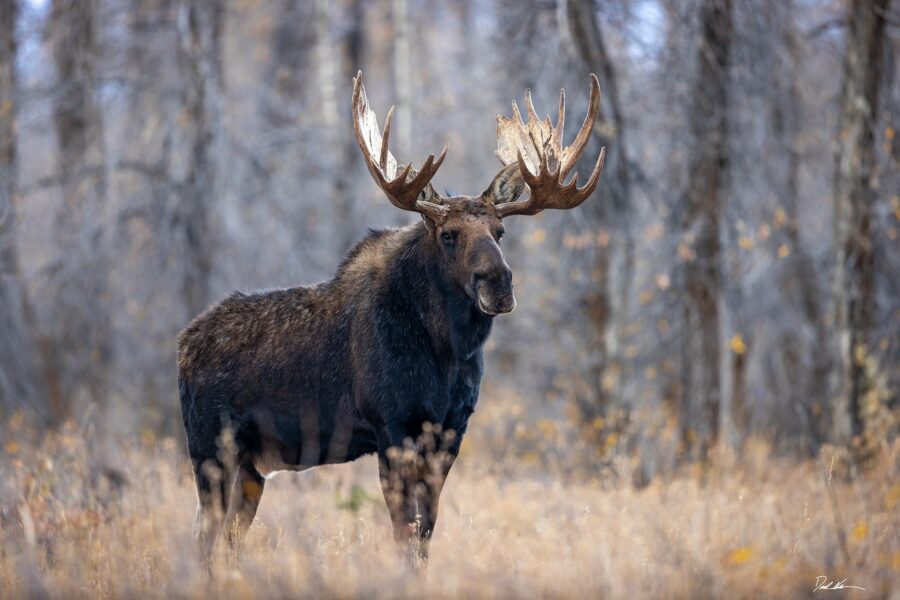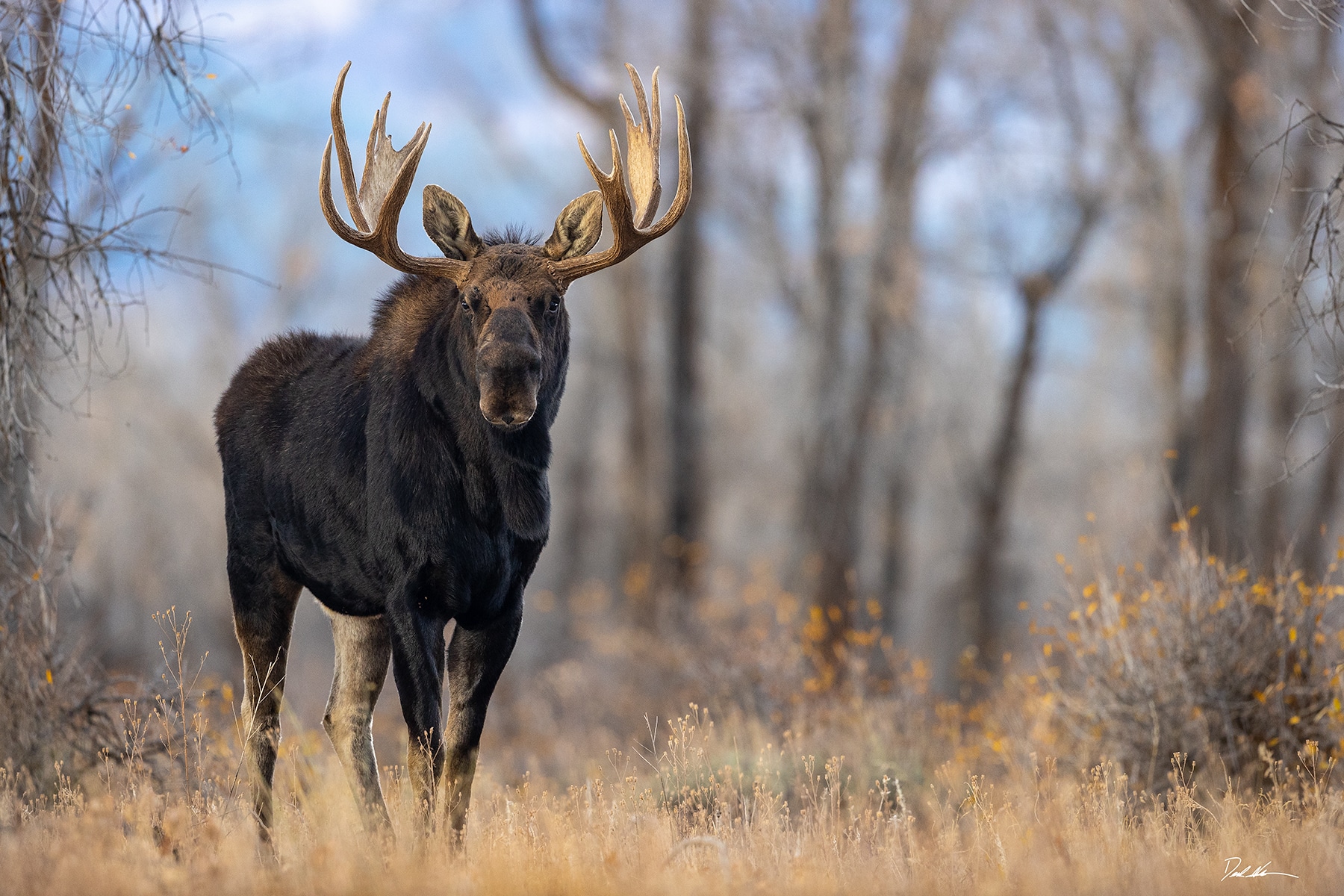
How to Photograph Wildlife: 5 Wilderness Photography Tips for Spotting Grand Teton Moose
Photographing wild moose is on many photographers’ bucket lists, maybe even yours, but a lot of aspiring photographers haven’t learned the basics of how to safely capture memorable, sharp images of these majestic creatures in the wild.
While spending a good amount of time in Grand Teton National park recently, I had the opportunity to learn these basics myself from other wilderness photography experts, rangers, and naturalists. And now I want to pass that knowledge on to you! So, read on for five sure-fire tips on how to photograph wildlife, like the great moose, safely and responsibly.
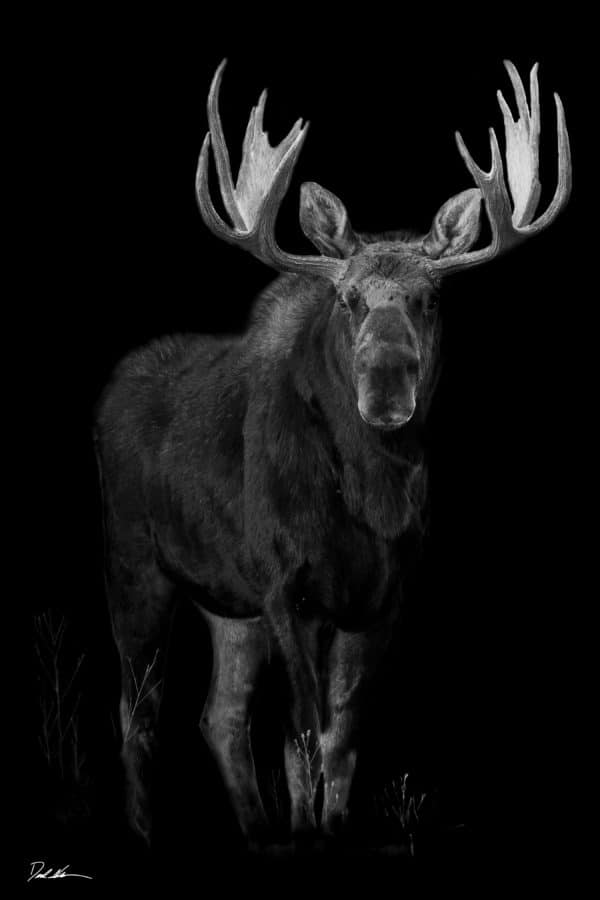
(Limited edition luxury fine art print of 6 – Derek Nielsen Photography)
I had been looking for moose for a few weeks while in the Teton National Park. Without a great understanding of their behavior I kept a far distance.
1. Take nature photography safety seriously
No photograph is worth dying for. The safety of yourself, the wildlife, and other people in the area should be your top priority when photographing the wildlife of any kind. Provoking or not respecting the wildlife could cause harm, injury, or even death. Luckily for us, the Grand Teton moose, like moose in general, are not territorial mammals and they don’t see us as a food source. That means we can have a wonderful experience in proximity to them—as long as we follow a few safety precautions.
Respect the animals space
The National Park Service recommends keeping a distance of about 25 yards from wild moose.
Understand the animals size
Moose are second to only bison in North America in size. A bull moose can be as tall as 7 feet 6 inches at the shoulders and weigh as much as 1,800 pounds. The male Grand Teton moose typically weigh between 800 to 1,500 pounds and stand between 5 to 7 feet at the shoulders. In short, these are creatures you do not want running at you at 35 miles per hour.
Be on the lookout for other wildlife
Grand Teton moose (and moose in other areas of the continent) share their habitat with bears, so I highly recommend carrying bear spray on your wilderness photography adventures. And do not travel inside the thick willow brush found all over the park. Inside these tall grasses, both moose and bear can easily be just feet away from you and you won’t know until it’s much too late.
Be mindful of the seasons
There are two circumstances where we need to be extra vigilant regarding proximity to our Grand Teton moose friends:
- Baby moose are on the scene
- You do not want to get caught between an aggressive and protective female moose (called a cow) and her young
- It’s rutting season
- Moose mating season typically occurs in the fall. During moose mating season time, typically the fall, raging hormones may make males overly aggressive
Know the moose attack warning signs
If you see a moose displaying any of these behaviors, understand they are stressed and may attack.
- Moose stops normal behavior and makes eye contact with you
- Ears are laid back and hair on the back of the neck, back, or hips is raised
- A lowered head position
- Smacking of lips or teeth
- Urination
- Whipping of head back and forth or stomping on the ground
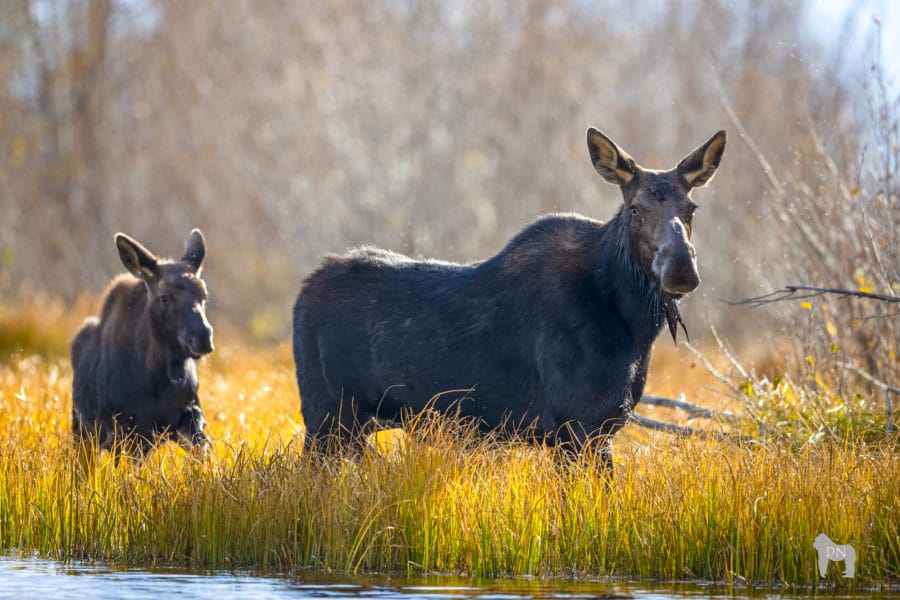
2. Know where (and when!) to look for wildlife
If you want to know how to photograph wildlife, the biggest key to success is understanding your subjects’ habitat. After all, it’s hard to be a great wilderness photographer if you don’t know where to find wildlife.
Your best chance to spot Grand Teton moose, for example, is along the aptly named Moose-Wilson road or on the banks of the Gros Ventre River. Why is that? Read on to learn a bit more about moose behavior.
Summer moose spotting
Moose prefer wetland wooded areas for both food and shelter during the summer months. Not only do the pools of cool water provide moose with nearly half their diet via aquatic plants (as well as essential nutrients lacking in their other food sources), they’re very refreshing on hot summer days!
Wintertime moose tracking
In the colder months, moose will seek out subalpine shrubland or deciduous forests, which provide both shade and safety from predators. One of the more clever tactics moose deploy in the winter is to seek deeper snow, which their natural predators are unable to easily navigate. While wolves are a moose’s largest predator, their comparatively smaller legs and body size cause them to struggle to keep up with their prey in deep snow.
(Limited edition luxury fine art print of 50 – Derek Nielsen Photography)
Moose are among my favorite animals on earth. Maybe it’s their size or sweet face but spending time observing them in nature has become something I dearly look forward to.
3. Study moose behavior
Daily moose behavior was something I quickly learned while out in the field photographing moose during the fall months in the Grand Teton National Park.
To start, to have a better chance of seeing moose active, you need to get up early in the morning. Because moose are built to survive in cold, harsh climates they struggle to stay cool during warmer days. This leads to them feeding and traveling during the early morning hours and then bedding down to save energy or stay cool in the shade by as early as 9 a.m. A full-grown moose can disappear in just a few feet of tall grass while bedding down, making them impossible to find. And even if you do manage to find them, photographing them through the grasses can be challenging.
While walking the forest, keep your eye out for dark contrasting figures amongst the brush and trees. Moose are very dark animals, and their coats make them stand out against the total ecosystem of the forest. Finally, being alert as you make your way through forests and along rivers will give you the greatest chance of seeing these beautiful animals.
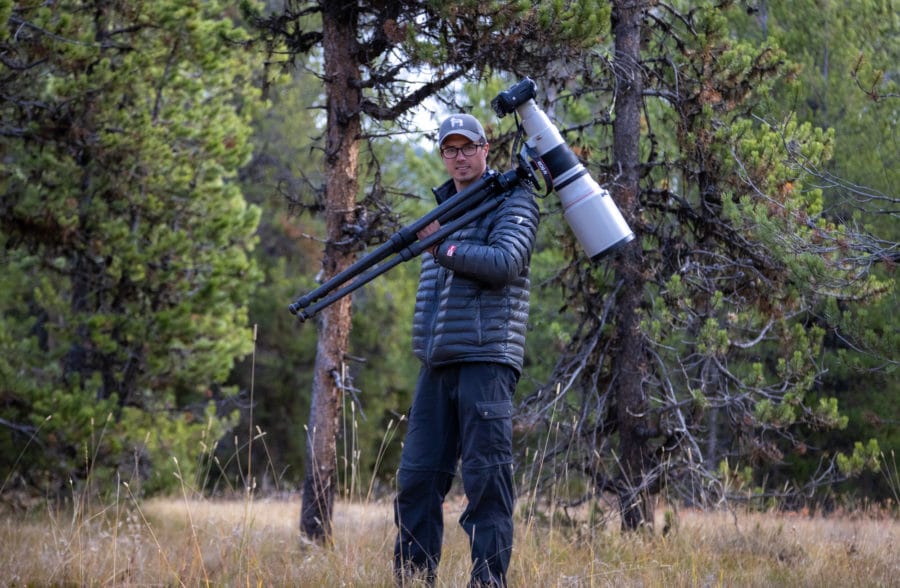
4. Equip yourself with the right gear for wildlife photography
Clothing
Wear waterproof hiking boots. While you’re stomping around the wet, marshy preferred habitat of the moose, your heels will sink, your tennis shoes will fill up with water and your open-toe sandals will do nothing to protect your skin from the scratchy brush.
Other must-have clothing items to handle potentially harsh weather conditions include long pants, long sleeves, layers, and water-resistant jackets.
I have no sponsorship or affiliation with the following products, but I can verify their field-tested durability and function. I wear Salomon hiking boots, Darn Tough hiking socks, Columbia Outdry jacket depending on the temperature (Shell and cold weather jacket), Columbia synthetic base layers, and KUHL pants. All of these have provided me protection from the elements while keeping me warm in cold conditions. And they are breathable during long hikes or warmer days. There is no right or wrong here; these are just my go-to’s.
Camera equipment
I am a Canon guy. I have been since day one, and they have never let me down. Their professional-grade gear has withheld rainstorms, drops, sand, safaris, coastal salt, freezing temperatures, and even an indirect lightning strike on my city rooftop. This doesn’t mean it always will or that you should abuse your equipment, but so far I’ve been lucky enough to report they have never failed me while out in the field.
Camera gear is expensive. I have found I like to buy a well-rounded camera, like the Canon 5D Mark iv for everyday shooting. (I’ll probably make the jump to the Canon EOS R5 soon.)
For specific animals, like moose, bears, lions, or elephants, I tend to rent my gear. This way, I get to shoot with a 600mm lens, new Canon 1Dx mark iii, and all the accessories, like extenders, etc., and not drop $20,000 in the process. For only a fraction of the price, I can get razor-sharp images, while maintaining a safe distance.
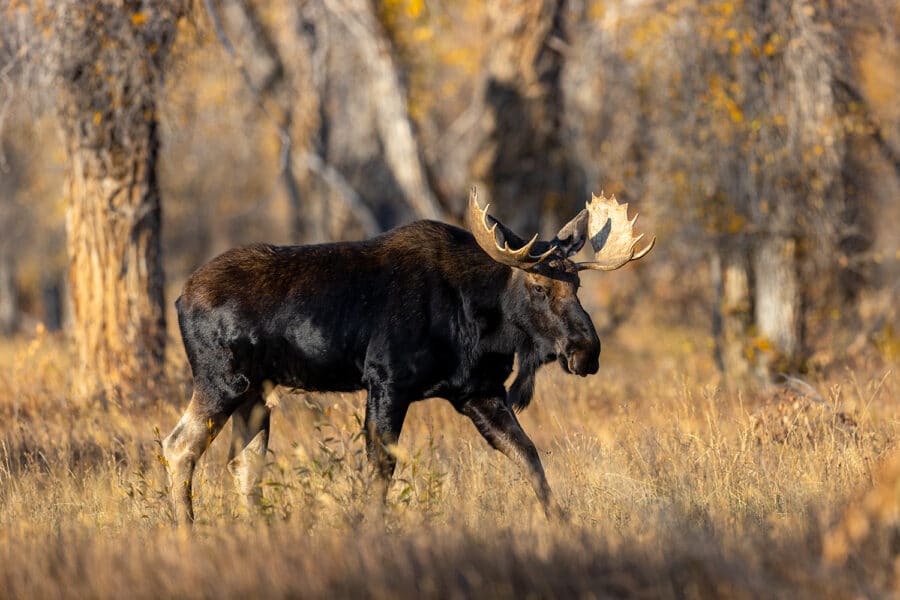
(Open Edition Print – Derek Nielsen Photography)
On this day I watch this large male moose with a cow. He was putting on quite a show for her.
5. Get a handle on nature photography basics first
-
- I won’t tell you how to compose the image. That is for another article, and open to your artistic creativity. I will though tell you how to set yourself up to get fantastic images of moose in nature.
Capturing details in darkness: Put the sun at your back
As an owner of a black dog, I already knew how challenging it can be to pull out all the details you’re hoping to capture when taking images of dark animals. During my time in Grand Teton, I ran up against this same issue with moose—until I learned to position myself with the sun at my back. It lights up their coats beautifully. On overcast days or snowy days, this won’t be as important, but on a sunny day, it can be the difference between a blah photo of a moose and an award-winning photo of a moose.
Get a long lens
You don’t have to buy—you can always rent. And if you do, be sure to also use a sturdy tripod with a gimbal head. With the appropriate settings on the camera, you might be able to shoot a sharp handheld image, but your sore arms will complain after a while.
How to Photograph Wildlife: General Tips
- Capture animal eyes in razor-sharp focus
- This is soooooo important because it helps make a connection between your subject and the audience
- Keep your shutter speed above 1/1000th of a second or more and ISO high enough to handle this
- This will freeze any motion you may be encountering. You can always fix noise later, but you can’t fix blur. And coming home to a memory card full of photos that looked great on your camera but turn out to be blurry will break your heart.
- For animal portraits, shoot between f/2.8 and f/5.6
- You can go higher, but keeping it in this range will blur the background enough to make your subject stand out
- For animals and their environment, shoot between f/8 and f/16
- Yes, there are reasons to go in either direction from these numbers. But between f/8 and f/16 you gather sharpness across the entire depth of field. Other great photographers like Paul Nicklen or Tom Mangelsenhave a mastery level way of including the subjects of their photograph into its surroundings.
- Capture animal eyes in razor-sharp focus
- I won’t tell you how to compose the image. That is for another article, and open to your artistic creativity. I will though tell you how to set yourself up to get fantastic images of moose in nature.
I was amazed at the speed these animals could accelerate their huge bodies. It is no question who rules this Teton landscape
Ethical wilderness photography means doing what we love—with love
As you can probably tell from this post and my body of work, I am endlessly passionate about wilderness photography. But while we are lucky enough to still have opportunities, all across the world, to view wildlife in their natural habitat, we must understand that this privilege comes with great responsibility.
“If future generations are to remember us with gratitude rather than contempt, we must leave them something more than the miracles of technology. We must leave them a glimpse of the world as it was in the beginning, not just after we got through it.”
President Lyndon B. Johnson
To be an ethical photographer or wildlife lover, you must not disturb the animals. Part of learning how to photograph wildlife responsibly means understanding this obligation. No calling, feeding, harassing, or baiting. Let them be. Observe them and watch the wonders of nature unfold before your eyes. If you don’t, not only do you instantly change the animal’s natural behavior—you may also be breaking the law.
The information inside this article is intended to create an informed photographic visitor to our National Parks specifically the beautiful Grand Teton National Park. As with all my work, I will donate a portion from each sale to a conservation organization directly doing incredible work in the region (Conservation Alliance).
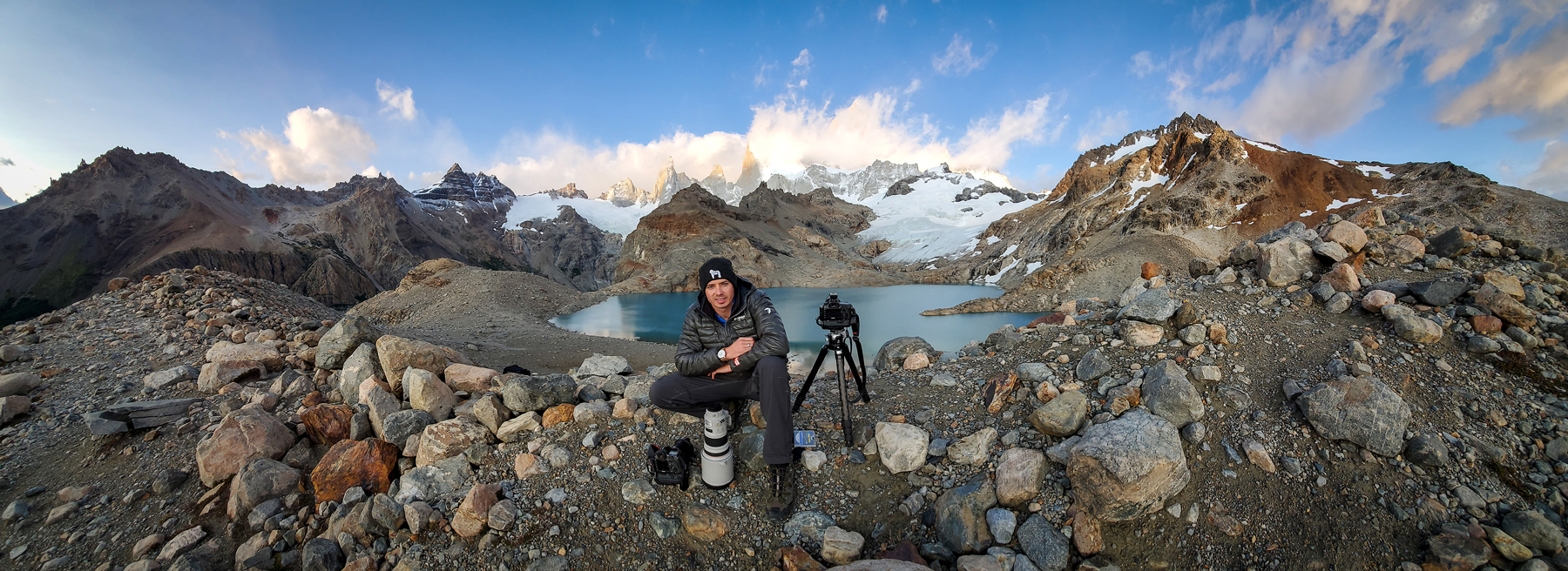
Hello! I'm Derek.
DEREK NIELSEN PHOTOGRAPHY RAISES AWARENESS ABOUT THE GLOBAL NEED FOR CONSERVATION THROUGH PHOTOGRAPHY AND DONATES UP TO 15% OF ALL SALES BACK TO ENVIRONMENTAL ORGANIZATIONS AROUND THE WORLD.
